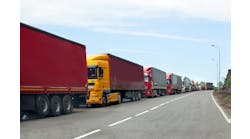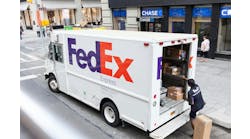Nobody likes broken wood pallets. That’s why so many of them end up in landfills. It takes an innovator to see value in something that few others do. When the Kurtz brothers look at wood pallets, they see mulch.
The challenge
Unfortunately, wood pallets don’t make pretty mulch — the kind landscapers like to use for decorating the entranceways of industrial office buildings and residential areas. In the early ’90s, Kurtz Brothers Inc., a Northeast Ohio-based organic recycling and landscaping firm, started looking at the possibility of converting to mulch the old and broken pallets that local businesses were dumping in landfills. They knew they’d need the right grinders to produce the right texture and the right coloring to produce the right look.
They also needed the right volume of pallets to keep up with anticipated demand for the mulch. Luckily for the Kurtz Brothers, many states have been limiting the amount and kind of material that can be dumped in landfills. Some have even banned pallets from local sites. That drove many companies to look for recycling options. The Kurtz Brothers offered them one.
The innovation
The company started inviting customers and other firms in Ohio and Indiana to dump their old pallets at strategic sites for a nominal fee. Tom Kurtz, one of the principals of Kurtz Brothers, noted that the only way for his company to make a profit and to make pallet-heavy customers happy at the same time was to produce a product from these pallets that would fly out the door faster than the pallets were flowing in.
Kurtz Brothers found ready takers for the mulch, not only among landscapers, but among growers who use mulch to cover their compost and top soil to help it suppress weeds and resist disease. But Kurtz says the marketability of mulch made from ground-up pallets goes up significantly when color is added.
"Instead of paying a disposal fee to take these pallets to a landfill, customers bring them to us," Kurtz says. "Disposal rates could be anywhere from $25 to $50 a ton otherwise. This is a cost avoidance for them. We shred the pallets through a series of grinding steps to give the wood the texture of a mulch, then we color it with iron oxide pigments and turn it into decorative landscape mulch."
The results
The market for colored mulch has caught fire since Kurtz Brothers started selling it in 1992. Kurtz says his company has more than enough demand for the mulch to use up the volume of pallets coming in. In fact, he says, some companies are using virgin wood fiber to fill the need for colored mulch.
Scott Thompson, vice president of sales and marketing for Amerimulch, the firm to which Kurtz Brothers has since sold the coloring technology, says his market has expanded beyond pallet users.
"It started with them because they wanted to get rid of this cost center," says Thompson. "Then the mulch producers got into it. Even end users. If you handle and transport a lot of pallets you’re moving a lot of air. Some end users are finding if they invest in a grinder, it will reduce their disposal costs enough to pay for the equipment."
Amerimulch is dedicated to developing programs to help other companies around the world discover the beneficial reuse of wood waste. Because of such research and development, there are more companies out there looking to take your scrap wood pallets. You may be able to cut your junk pallet handling dramatically by keeping this deadwood out of your waste stream. MHM
For More Information
To find out more about recycling wood pallets, contact the following companies:
Amerimulch, www.amerimulch.com
Continental Biomass Industries, www.cbi-inc.com
Kurtz Brothers Inc., www.kurtz-bros.com
Peterson Pacific, www.petersonpacific.com
West Salem Machinery, www.westsalem.com


